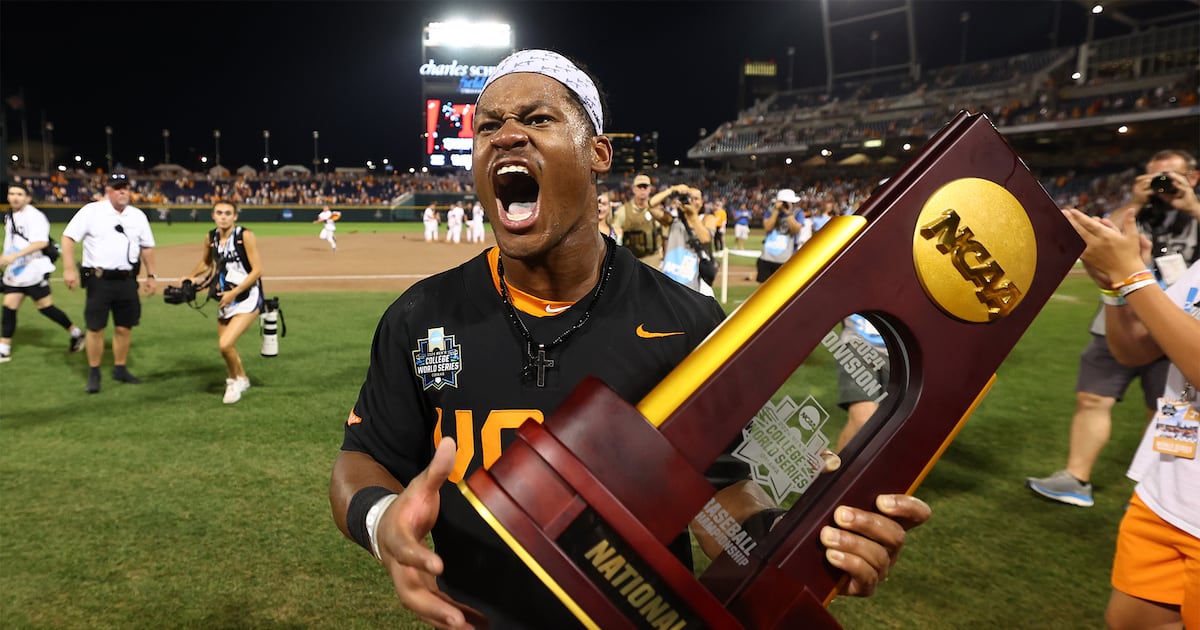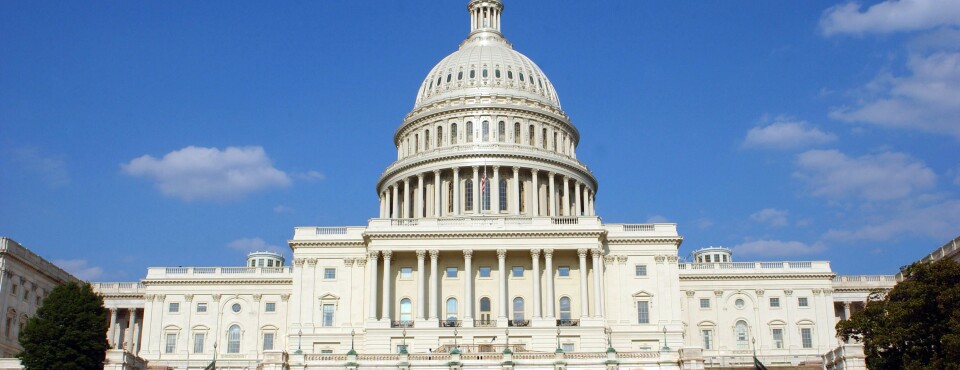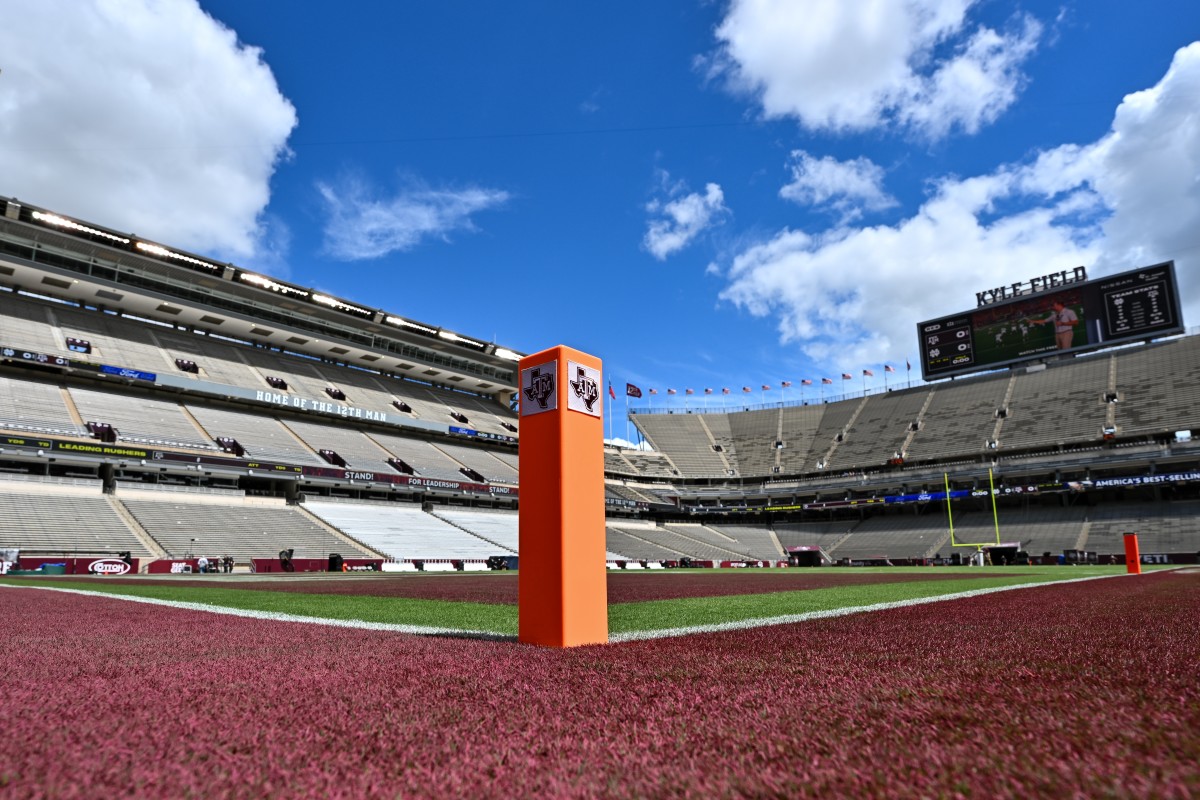NIL
How might House settlement affect college baseball?
Conversations about the House settlement have predictably centered on how schools might deploy funds to football and men’s basketball, but there are plenty of other sports that might see benefits from a new structure — perhaps none more than baseball. Baseball might be one of the biggest winners in the passage of the settlement, as […]

Conversations about the House settlement have predictably centered on how schools might deploy funds to football and men’s basketball, but there are plenty of other sports that might see benefits from a new structure — perhaps none more than baseball.
Baseball might be one of the biggest winners in the passage of the settlement, as I wrote in this week’s magazine.
At a base level, seeing its longstanding scholarship limit of 11.7 erased in favor of roster limits allows for schools with baseball aspirations more access to fully fund scholarships in the sport.
South Carolina, Florida State, Clemson and Tennessee are just a few of the schools that are expected to add a significant number of scholarships moving forward, while revenue share and NIL figure to factor in significantly.
That also comes as schools continue to invest considerable resources into coaching contracts and facilities across the sport.
“It’s really the only sport that was so low and underfunded on the scholarship side that the first thing with the scholarship limits going away, it’s like, ‘OK, how fast can we get those to 25, 30, 34, whatever it is,’” South Carolina AD Jeremiah Donati told me. “Oh, and, by the way, you’ve got to pay ’em. It’s like a double dip.”
This also opens the door for a handful of mid-majors that are willing to invest more in baseball. College of Charleston is expecting to share between $300,000 and $500,000 with its baseball team.
“We haven’t been to the tournament in 11 years now,” said College of Charleston AD Matt Roberts. “And when you look up the street and you see Coastal [Carolina] going back [to the College World Series] — we beat them twice this year — you know it’s possible. Every year in the tournament, there’s always that team, and we’ve got to get back in the tournament. Rev share gives our coaching staff a chance to put together a competitive roster to do that.”
College baseball has always been hamstrung by scholarship limits. In this new revenue sharing world, the sport might just be ready for a significant cash infusion.
NIL
Money behind No. 1 QB’s NIL deal backs up Kirby Smart’s blueprint at Georgia
As some college football programs share millions of dollars in NIL packages to high school recruits, head coach Kirby Smart’s Georgia Bulldogs claim they are prioritizing relationships. NIL money is beginning to build on the high school recruiting trail in the post-House settlement era, as schools are allowed to share up to $20.5 million directly […]

As some college football programs share millions of dollars in NIL packages to high school recruits, head coach Kirby Smart’s Georgia Bulldogs claim they are prioritizing relationships.
NIL money is beginning to build on the high school recruiting trail in the post-House settlement era, as schools are allowed to share up to $20.5 million directly to athletes this year.
Five-star recruits like offensive tackle Felix Ojo (Texas Tech commit) and tight end Mark Bowman (USC), among others, have reportedly signed lofty rev-share deals in exchange for their commitments.
Ojo’s three-year, $5.1 million rev-share deal with Texas Tech is believed to be the largest such agreement in history at the time. And Bowman is expected to be the highest-paid tight end recruit in history on a multi-year deal worth upwards of $5 million, according to On3’s Pete Nakos.
Smart and Co. missed out on Bowman and others in the 2026 class. But not in the race for No. 1 quarterback Jared Curtis, who re-committed to UGA over Oregon back in May.
Holding a $1.8 million On3 NIL valuation before his senior high school season, Curtis is expected to make approximately $750,000 during his true freshman season at Georgia, per Nakos.
In a world where players like Ojo and Bowman are inking NIL deals worth millions in their first season, Curtis’ agreement isn’t as valuable as one might expect. According to Smart, though, that deal backs up UGA’s blueprint.
“We sell relationships over transactions,” Smart said at SEC Media Days. “We think the relationship still wins out, because the relationship allows you to push people and demand excellence. And we’re going to continue to do that at Georgia.”
It’s unclear what Smart and Co. are sharing to players this year, but the recruiting train in Athens is still rolling. The Bulldogs, which rank second in blue-chip ratio, hold the nation’s No. 2 class in the 2026 cycle and haven’t finished outside the top-five under Smart.
NIL
SCORE Act advances through committee, moving college sports reform closer to House floor
A bill that would help regulate college sports and how athletes are compensated by schools made it through a House committee on Wednesday — a notable step on the way to it conceivably being put to a vote — while public criticism of the potential legislation also mounted. After years of lobbying for help from […]

A bill that would help regulate college sports and how athletes are compensated by schools made it through a House committee on Wednesday — a notable step on the way to it conceivably being put to a vote — while public criticism of the potential legislation also mounted.
After years of lobbying for help from Congress by college sports leaders, the SCORE Act is the first bill to move through committees in either chamber. The House Energy and Commerce committee and the Committee on Education and the Workforce both approved the bill with only Republican votes and no Democratic support.
That clears the way for the bill to go to the floor of the House for a vote, but the soonest that could happen is in the fall Congressional session starting in September, with summer recess looming.
Before either hearing was held, attorneys general from Florida, Ohio, New York, Tennessee and the District of Columbia sent a letter to six committee chairs and ranking members of Congress, detailing their strong opposition to the bill.
“The SCORE Act is a misguided effort that will enshrine in federal law the arbitrary and biased authority of the NCAA at its worst,” the letter said.
The proposed legislation from seven Republican and two Democratic sponsors prevents athletes from obtaining employment status and mirrors many of the terms of the recent House v. NCAA settlement. It would officially end most administrative restrictions on athletes’ name, image and likeness (NIL) compensation, but it allows schools and conferences to establish what is and isn’t permissible. Should it pass, it would override current NIL laws, which vary from state to state, and grant antitrust protections to the NCAA and conferences.
Critics say the bill is too deferential to the NCAA and power conferences, who have led the efforts to push for a federal law.
Even if the SCORE Act passes a House vote on partisan lines with Republicans in control, it faces a much higher bar in the Senate. The bill would need 60 votes to pass in the Senate, including seven Democrats.
One of those Democrats, Sen. Maria Cantwell, has already voiced opposition to the SCORE Act, calling it the “national championship of all heists.” The players’ associations of several professional sports leagues also came out with a joint statement, encouraging lawmakers to reject the bill.
Big West commissioner Dan Butterly wrote in a letter to Rep. Michael Baumgartner (D-Wash.), another SCORE Act critic, that too many of the bill’s provisions are skewed toward what would work for schools in the wealthiest conferences rather than the majority of Division I schools.
“Institutions within The Big West are proud to offer meaningful educational and competitive experiences to student-athletes. But without financial safeguards, structural flexibility and inclusive policymaking, reforms like the SCORE Act may unintentionally harm the very programs they seek to protect,” Butterly wrote.
As written, the SCORE Act probably has little chance of garnering enough support to pass the Senate, if it gets there.
Still, the progress is meaningful. For the first time, lawmakers have prioritized the need to help college sports sort out its issues enough for a bill to be debated in committee and possibly sent to the full body for consideration.
The next notable step out of Washington on college sports could be coming from the executive branch.
President Donald Trump has signaled his interest in getting involved in the issue, possibly by forming a commission to search for solutions or by signing an executive order.
A draft of “Saving College Sports,” obtained by The Athletic, directs the Secretary of Labor and the National Labor Relations Board to address the debate over the employment status of college athletes.
It also calls for members of Trump’s cabinet and other political officials to pursue policy and protections in a number of other areas related to college sports, including rules that could be challenged by antitrust complaints and continued opportunity for scholarships and roster spots, along with preventing “unqualified or unscrupulous agents from representing athletes.”
— Stewart Mandel and Justin Williams contributed reporting.
(Photo: Chip Somodevilla / Getty Images)
NIL
College baseball transfer portal intel
Go to On3 Home About On3AboutAdvertisersCareersContact SupportCustomer ServicePrivacy PolicyChildren’s Privacy PolicyTerms of Service On3 ConnectTwitterFacebookInstagram The On3 App for college sports fans: © 2025 On3 Media, Inc. All rights reserved. On3 is a registered trademark of On3 Media, Inc. 0
NIL
Student Athlete Employment, NIL Bill Clears Two House Committees
A bill seeking to prohibit collegiate athletes from becoming employees and limit the NCAA’s antitrust liability is heading to the House floor after two congressional committees voted to approve it. The House Education and the Workforce Committee voted 18-17 Wednesday to approve the legislation—known as the “SCORE Act” (H.R. 4312)—which would cement some terms of […]



A bill seeking to prohibit collegiate athletes from becoming employees and limit the NCAA’s antitrust liability is heading to the House floor after two congressional committees voted to approve it.
The House Education and the Workforce Committee voted 18-17 Wednesday to approve the legislation—known as the “SCORE Act” (H.R. 4312)—which would cement some terms of a landmark settlement between the NCAA and college players, and bar athletes from obtaining employment status.
The House Energy and Commerce Committee greenlit a similar version of the bill 30-23 along party lines. The two measures will have to be reconciled in the …
NIL
1 College Spent More Than $50 Million On NIL Payments In 2024-25
1 College Spent More Than $50 Million On NIL Payments In 2024-25 originally appeared on The Spun. Some SEC money is just different and that’s certainly the case in the state of Texas. With NIL being the name of the game in this current era of college athletics, some universities are willing to pay whatever […]

1 College Spent More Than $50 Million On NIL Payments In 2024-25 originally appeared on The Spun.
Some SEC money is just different and that’s certainly the case in the state of Texas.
With NIL being the name of the game in this current era of college athletics, some universities are willing to pay whatever it takes to be competitive on a national scale — as evidenced by the checks written by the Texas A&M Aggies.
Advertisement
Per an open records request by reporter Alex Miller, fans were able to learn just how much the Aggies spent on NIL alone the last calendar year; which was upwards of $50 million.
In an article written in The Bryan-College Station Eagle, Miller revealed the Power Four school spent $51.4 million on NIL payments in both men’s and women’s sports from July 2024 to June 2025 — a roughly $19 million increase from the previous year.
Of the $51.4 million, $49.2 million was invested in A&M’s men’s sports, while just $2.2 million was divided up amongst its women athletes.
Advertisement
Following last month’s landmark House settlement, money schools can directly give to their players will be capped at $20.5 million this year, with the annual pot expected to grow to around $32 million over the next decade or so.

Aug 31, 2024; College Station, Texas, USA; A detailed view of a pylon prior to the game between the Texas A&M Aggies and the Notre Dame Fighting Irish at Kyle Field. Mandatory Credit: Maria Lysaker-USA TODAY© Maria Lysaker-Imagn Images
The new revenue-sharing model doesn’t seem to account for name, image, likeness payments outside of what each program is allotted, however. So it’s fair to assume that teams will work their way around it by outsourcing that spending to the boosters and businesses that are already supporting their athletes behind the scenes.
Advertisement
Still though, $50 million on NIL payments is a pretty shocking number. Especially when you consider where college sports were not even 10 years ago.
Related: NFL Quarterback Suffers Season-Ending Injury Before Training Camp
1 College Spent More Than $50 Million On NIL Payments In 2024-25 first appeared on The Spun on Jul 22, 2025
This story was originally reported by The Spun on Jul 22, 2025, where it first appeared.
NIL
College Basketball’s Intl Talent Boom Faces Revenue-Sharing Risks
College basketball is witnessing a surge of international talent, with over 70 foreign players expected to join power-conference programs for the 2025 signing class. This growth is driven by lucrative NIL opportunities, positioning NCAA Division I basketball as a highly attractive option for young players worldwide. However, impending revenue-sharing regulations may deter future international prospects […]
College basketball is witnessing a surge of international talent, with over 70 foreign players expected to join power-conference programs for the 2025 signing class. This growth is driven by lucrative NIL opportunities, positioning NCAA Division I basketball as a highly attractive option for young players worldwide. However, impending revenue-sharing regulations may deter future international prospects by limiting financial incentives and altering recruiting dynamics. Experts warn that if strict enforcement of these regulations occurs, it could lead to a significant decline in the influx of European players, ultimately reshaping the talent landscape in college basketball.
By the Numbers
- 38 foreign players joined power-conference programs in the previous year.
- Over 70 international prospects expected to sign in 2025-26.
Yes, But
The potential decline in international prospects stems from the new revenue-sharing regulations, which may limit budgets for basketball programs and shift focus back to domestic talent. This could affect not just high-majors but lower-tier schools that rely on attractive compensation to recruit effectively.
State of Play
- High-major programs are currently spending heavily to attract top-tier international talent.
- The introduction of the College Sports Commission could enforce stricter NIL regulations impacting recruitment strategies.
What’s Next
If enforced, new budget caps could compel schools to limit spending under $5 million for rosters, potentially decreasing player compensation. This change may drive high-caliber international players to remain in Europe for more lucrative opportunities, reshaping the recruiting landscape in college basketball.
Bottom Line
The evolving financial and regulatory environment in college basketball could lead to a drastic reduction in international talent influx, challenging the sport’s competitive balance and growth in diversity. Programs must adapt quickly to these changes to maintain their global appeal.
-

 College Sports2 weeks ago
College Sports2 weeks agoWhy a rising mid-major power with an NCAA Tournament team opted out of revenue-sharing — and advertised it
-

 Motorsports3 weeks ago
Motorsports3 weeks agoTeam Penske names new leadership
-

 Sports2 weeks ago
Sports2 weeks agoNew 'Bosch' spin
-

 Fashion1 week ago
Fashion1 week agoEA Sports College Football 26 review – They got us in the first half, not gonna lie
-

 Sports1 week ago
Sports1 week agoVolleyball Releases 2025 Schedule – Niagara University Athletics
-

 College Sports3 weeks ago
College Sports3 weeks agoMSU Hockey News – The Only Colors
-

 Sports2 weeks ago
Sports2 weeks agoE.l.f Cosmetics Builds Sports Marketing Game Plan Toward Bigger Goals
-

 Health1 week ago
Health1 week agoCAREGD Trademark Hits the Streets for Mental Health Month
-

 College Sports2 weeks ago
College Sports2 weeks agoBuford DB Tyriq Green Commits to Georgia
-

 Youtube2 weeks ago
Youtube2 weeks agoWill LeBron James request a trade? 🤔 Windy says MULTIPLE TEAMS would make offers 👀 | NBA Today






























